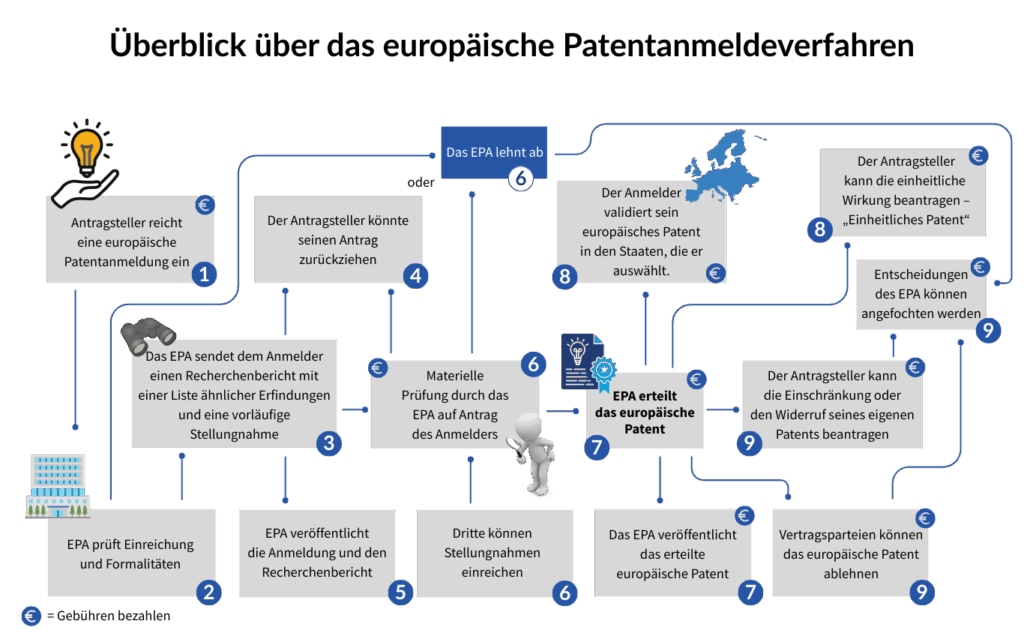
A patent gives inventors the opportunity to protect their ideas legally and to make use of them commercially. But how does a European patent application actually work? At first glance, the process may seem complex – our overview will help to shed some light.
1. Filing the European Patent Application
The first step is to file the application with the European Patent Office (EPO). The necessary documents are submitted and the application fees are paid.
2. Formal Examination
The EPO checks whether all formal requirements are met – for example, whether the documents are complete and comply with the formal standards.
3. Search Report by the EPO
Next, the EPO prepares a search report, listing similar existing inventions. This report also includes an initial opinion on patentability. For the applicant, it is an important basis for assessing the chances of success.
4. Option to Withdraw
Based on this information, the applicant can decide whether to withdraw the application or proceed further.
5. Publication
After a maximum of 18 months, the EPO publishes the application together with the search report. From this point on, third parties may also file observations.
6. Substantive Examination
At the applicant’s request, the application undergoes a substantive examination. The EPO evaluates whether the invention is novel, inventive, and industrially applicable. If no obstacles are found, the procedure moves forward – otherwise the EPO may refuse the application.
7. Grant of the European Patent
If the examination is successful, the EPO grants the European patent. It is then published and becomes legally effective.
8. Validation or Unitary Patent
At this stage, the applicant has two options:
- Validation in selected countries: The patent becomes effective in the chosen states.
- Unitary Patent: Since 2023, applicants may request a unitary effect, providing patent protection in multiple EU member states.
After Grant – Rights and Options
Even after grant, there are several possible scenarios:
- The applicant may request limitations or revocation.
- Contracting states may challenge the patent.
- EPO decisions may be appealed.
Conclusion: The Journey Is Worthwhile
The European patent application process is demanding, but it offers enormous advantages: with a single procedure, you obtain unified protection in many European countries.
As a patent law firm, we guide you through every step – from the first idea to the application, to successful grant and enforcement of your patent. Feel free to contact us if you need support with your innovation!